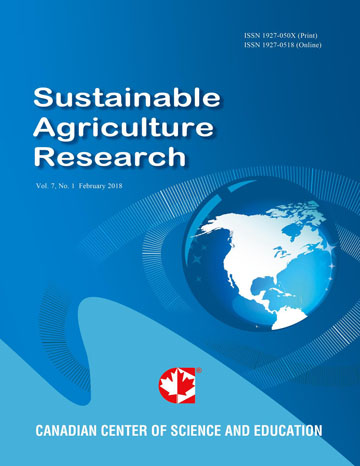Adoption and Impact of the Improved Fallow Technique on Cotton Productivity and Income in Zambia
- Nandi Jama
- Elias Kuntashula
- Paul C. Samboko
Abstract
An improved fallow is a soil fertility agroforestry technique that has commonly been used in the staple maize production systems of Zambia and sub-Saharan Africa. Several studies have assessed the adoption and impact of the improved fallow on maize production. Generally, it has been observed that though the improved fallow does increase maize yields, its efficacy on welfare in terms of increased income is low. The use of the technique on cash crops that could significantly contribute to household welfare has rarely been investigated. This study assessed the factors affecting the adoption and impact of improved fallows on a commonly grown cash crop, cotton, in the cotton growing provinces of Zambia. The study used a sub sample (N=1206) of the nationally representative 2014/15 Rural Agricultural Livelihoods Survey (RALS) data which was randomly collected by the Indaba Agricultural Policy Research Institute (IAPRI) and Central Statistical Office (CSO) of Zambia. The determinants of improved fallow adoption among the cotton farmers were examined through the use of the probit model while the impact of the technique on cotton production and income was evaluated by using the propensity score matching and the endogenous switching regression models. Among the socioeconomic factors significantly increasing the probability of improved fallow adoption included: increases in age, education level, and per capita productive assets of the farmer, in addition to the area under cotton production and the distance of the homestead to the market. Institutional factors found to increase the farmer’s likelihood of adopting the improved fallow in the cotton production systems included; farmer membership to a cooperative, receiving improved fallow seedlings from the government projects and having information on agroforestry tree species. On the other hand, an increase in land size per capita was found to negatively affect the likelihood of improved tree fallow adoption. Impact estimates showed significant cotton yield and income increases as a result of adopting the technique. The continuous provision of information on relatively new techniques such as the improved fallows preferably in farmer organized groups, and support towards the provision of the technique’s planting materials are some of the areas requiring government and NGOs attention. In addition, the study recommends that the farmers’ formal education level should be enhanced and that improved tree fallows should also be explicitly promoted on cash crops that have similar agronomic requirements to maize such as cotton.
- Full Text:
 PDF
PDF
- DOI:10.5539/sar.v8n2p1
Index
Contact
- Joan LeeEditorial Assistant
- sar@ccsenet.org
